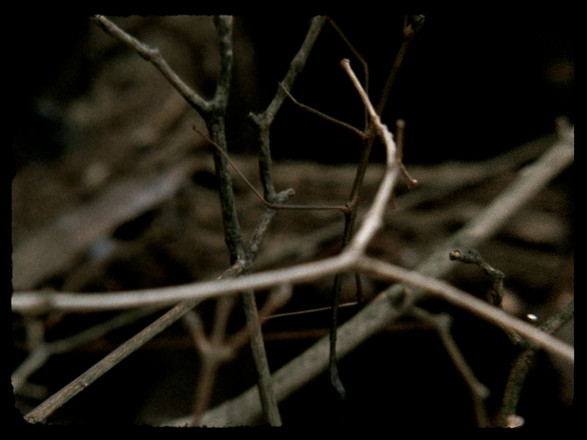
The IAC will present the first significant solo exhibition in France of the work of artist Daniel Steegmann Mangrané. The artist, hailing from Catalonia, born in Barcelona (Spain) in 1977, who today lives and works in Rio de Janeiro (Brazil) has presented his work in numerous solo and group exhibitions all over the world, and more recently during the 14th Biennial of Lyon, Mondes flottants.
Daniel Steegmann Mangrané has created a polymorphous work (drawing, sculpture, film, installations, etc.). His arrival in Brazil in 2004 was motivated by his fascination for the Amazonian forest – as a child he wanted to be a biologist, an entomologist or a botanist – as well as his discovery of Brazilian artists, Lygia Clark and Hélio Oiticica. Beginning at end of the 1950’s, for the founders of the Neo-Concrete movement, intuition, subjectivity and public participation managed to reconcile outdated dualisms, starting with the commonly acknowledged opposition between object and subject.
Also nourished by anthropology and the poems of Stela do Patrocínio, one of which inspired the title of this exhibition; in his work Daniel Steegmann Mangrané mixes natural and cultural forms. He explores how the living is entangled with its environment, experimenting with space as an area of the sensitive and of relationships.
Impregnated by the Amerindian perspective of anthropologist Eduardo Viveiros de Castro – who blurs the distinction between human and non-human – and by the thinking of Philippe Descola who strives to go beyond the Nature-Culture dualism, Daniel Steegmann Mangrané intends to totally and profoundly transform the space of the IAC. And so, the path of the exhibition generates new vanishing lines, changing perspectives which open out towards the exterior. Defined by a sensitive geometry, driven only by rays of natural light that penetrate the gloom, it encourages exploration and groping and fumbling, as if willing visitors to rediscover the essence of the living itself. This path through the exhibition also translates the artist’s fascination for the notion of dissolution, a dissolution of the subject which is likely to lead to an awareness of its surroundings.
The environment proposed here by Daniel Steegmann Mangrané begins with and spreads out from his artwork Phasmides. Falling somewhere between a modernist and anthropologist framework, this film is centered on the Phasmid (taken from the Greek, meaning “ghost”), more commonly known as the stick insect. The artists unexpected encounter with this phasmid, in 2008, was decisive, as it allowed him to engage in long term research around the idea of moving beyond Western dualisms. Stretched out like a stick, unmoving like a plant, this mimetic species is a master of camouflage, blending in so well with its surroundings that it almost completely disappears. In his text “Mimétisme et psychasthénie légendaire“(Mimicry and legendary Psychasthenia) (Minotaure n° 7, 1935), Roger Caillois defines mimicry not as some kind of mechanism for hiding from predators but rather as an intention to melt into one’s environment.
Phasmides, a hybrid form, between diorama and living painting, shows the phasmid appearing and disappearing like some form of living paradox. The insect reveals all of the ambivalence of its being, an unsuspected affinity between animal, plant and geometrical form, in order to propose an image which is “so very strong and so very fragile”. Evolving in environments which are in turn organic and geometric, it highlights the constantly evolving relationships that it entertains with its surroundings, cancelling out any opposition that might exist between the animate and the inanimate. Echoing Amerindian cosmology, background and figure, subject and object, nature and culture no longer appear for what they are but rather for the relationships that they stimulate.
By placing all of these relationships in space, the artist has provided us with a sharp and critical tool: “if there are no more subjects nor objects, then there are no longer spectators or works of art, but rather processes of relationships of mutual transformation. Combinations of agents which influence one another”. The path proposed by Daniel Steegmann Mangrané thus constitutes an initiatory environment for the visitor, one punctuated by the trajectory of the light. Inhabited by the phasmid, a creature “with neither head nor tail”, it enables one’s gaze to be shifted away from the center and allows one to play with, and test, one’s own position. The visitor is perpetually engaged in wandering along this path that has been designed for them, quite like the landscape that the artist has created for the stick insect.
Daniel Steegmann Mangrané invites us to experience our own presence, telling us that: “I am always seeking the moment where the visitor no longer observes the work but rather his or her own experience; the moment where they observe themselves”. An experience of self, conducive to transformation. (IAC press-release)
INSTITUT D’ART CONTEMPORAIN 11 rue Docteur Dolard 69100 Villeurbanne – France
Image: Daniel Steegmann Mangrané, Phasmides, 2012. Courtesy Mendes Wood DM, São Paulo and Esther Schipper, Berlin.© Daniel Steegmann Mangrané
